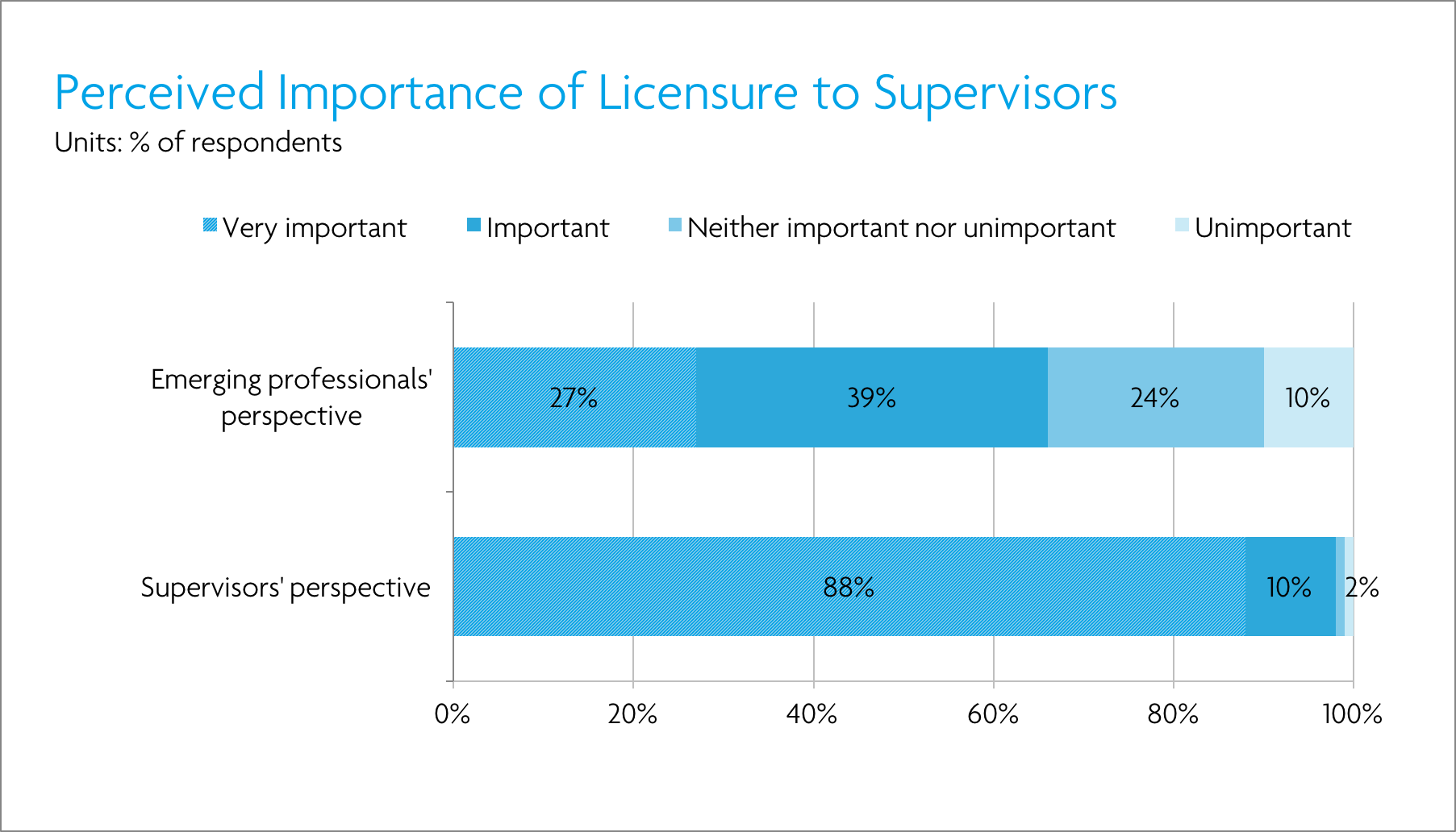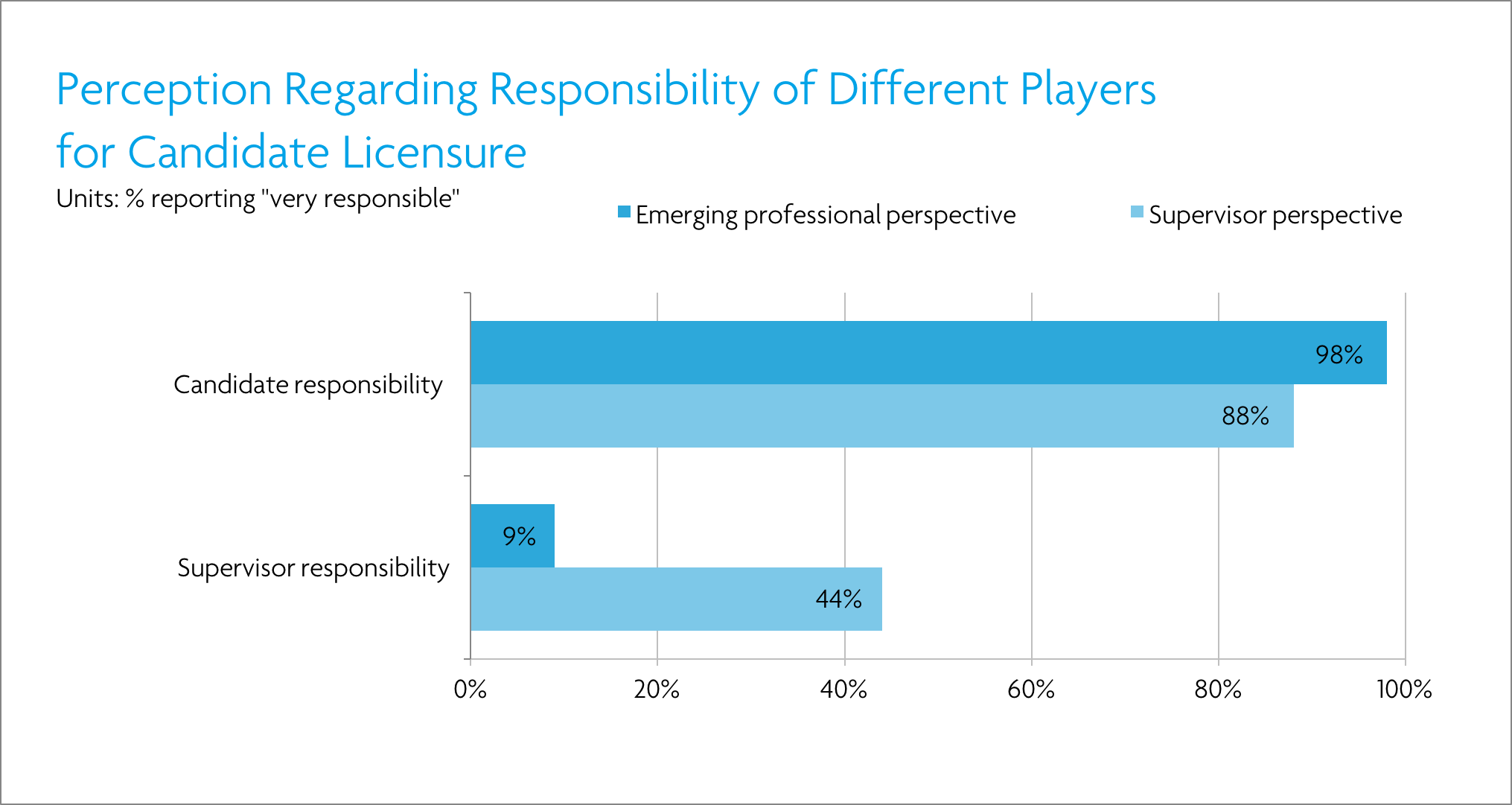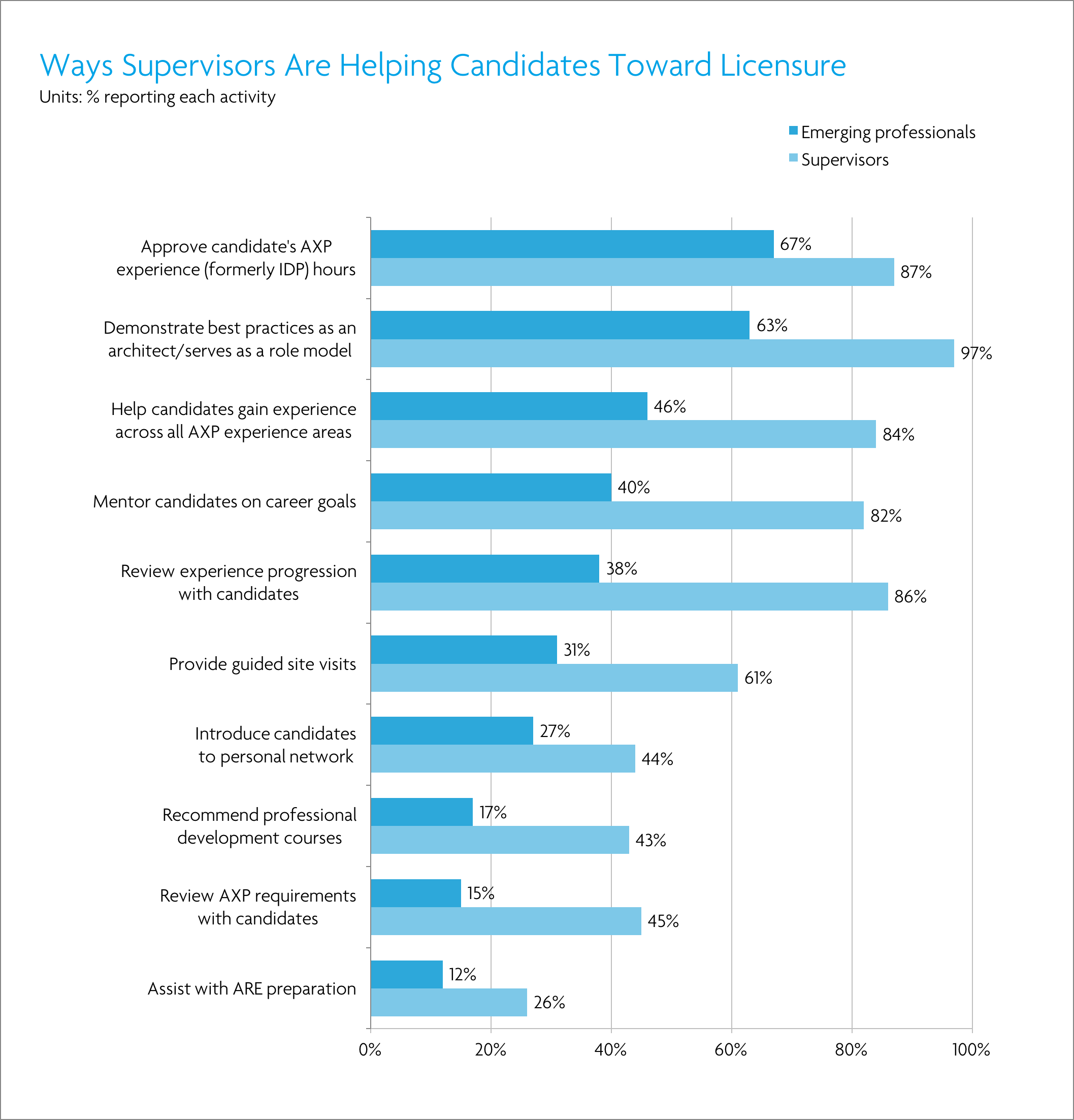Obtaining licensure is a primary objective for many architecture school graduates, and many architecture firms provide assistance to encourage emerging professionals along this path. But while both emerging professionals and supervisors believe that obtaining a license is important, larger differences emerge when considering the groups’ perceptions of each other.
To better understand these differing perceptions, the AIA and NCARB commissioned an independent third-party market research company to conduct a survey of these two groups in October 2016. The survey primarily focused on asking each group about their perceptions on obtaining licensure, firm support along the path to licensure, and the relationship between the emerging professional and their supervisor.
The importance of licensure
While the results revealed that almost all supervisors surveyed (98 percent) believe it is important for emerging professionals to obtain licensure, just 66 percent of emerging professionals reported believing that their supervisor thinks it is important for them to become licensed. In fact, just 27 percent of emerging professionals indicate they believe it is “very important” to their supervisors for them to obtain licensure, while 88 percent of supervisors indicated that it was “very important” to them for the emerging professionals they supervise to get licensed.

There are also differences in the perceived roles of the emerging professional and the supervisor when it comes to the responsibility of preparing a candidate for licensure. Almost all emerging professionals surveyed (98 percent) believe they are “very responsible” for obtaining licensure, while a smaller share of supervisors (88 percent) believe the candidate(s) they supervise are “very responsible” for their own licensure. Despite the disparity, both audiences overwhelmingly agree candidates shoulder the majority of responsibility for their licensure.
Larger differences emerge when it comes to the perceived role of the supervisor in preparing a candidate for licensure, with supervisors seeing themselves as having more responsibility than emerging professionals are expecting.

While 44 percent of supervisors believe they are “very responsible” for preparing the candidate(s) they supervise for licensure, just 9 percent of emerging professionals perceive their supervisor to be “very responsible” for their licensure. In addition, 26 percent of emerging professionals indicate that they believe that their supervisor is “not very” or “not at all responsible” for preparing them for licensure.
Supporting emerging professionals
Emerging professionals look to their supervisors for assistance along the path to licensure in a variety of ways, with the top two types of desired support being: “demonstrating best practice as an architect and serving as a role model” and “giving experience across all [Architectural Experience Program] AXP experience areas.” However, there are some significant gaps between the assistance that the emerging professionals believe they are receiving from their supervisor and the assistance the supervisors believe they are providing.

The largest gap between emerging professional and supervisor perception is related to reviewing experience progression. Eighty-six percent of supervisors believe they are providing that assistance, while just 38 percent of emerging professionals believe they are receiving it. For types of assistance like “mentor candidates on career goals” and “help candidates gain experience across all AXP areas,” less than half of emerging professionals believe they are receiving that assistance from their supervisor, while a significant majority of supervisors believe they are providing that assistance.
Closing the perception gap
One of the fundamental tenets of the architecture profession is the principle that established architects develop and train the next generation of practitioners. Supervisors play a vital role in helping emerging professionals navigate the path to licensure. In large part, they are responsible for providing a range of work opportunities to help candidates complete AXP, from practice management to construction administration and everything in between. Emerging professionals also look to their supervisors for career advice, networking tips, and first-hand insight into the profession. These pieces of information are just as critical to the success of an emerging architect as gaining experience hours.
Although the survey reveals statistically significant gaps between the assistance supervisors believe they provide and the assistance emerging professionals feel they receive, there are many ways supervisors and emerging professionals can step up to the plate and help close this perception gap; hopefully leading to more success on the path to licensure and generally in their careers. It is evident that emerging professionals feel it is their responsibility to get licensed, but both parties should work together to make sure the candidate’s needs are being met. As candidates progress along the path to licensure, supervisors can help expand their skills by assigning opportunities across each of the AXP’s areas, getting them started on prepping for the ARE, or pointing them toward opportunities outside of the firm such as volunteering opportunities and continuing education programs. Both groups can also increase communication by scheduling regular meetings to review experience progression.
To assist in general professional development, it becomes crucial for candidates to get exposure to a broad range of practice areas and a large network of designers and practitioners. Emerging professionals can engage with their supervisors and jointly plan or attend firm crawls, lunch & learns, and AIA chapter events. Overall, the supervisor-emerging professional relationship is a two-way street that can only improve if everyone works toward the common goal of securing the future of the architecture profession.
This year, the AIA and NCARB will embark on exploring ways to close this perception gap through a series of web posts. Do you have an engaged supervisor who finds new ways to support you on your path? Are you a supervisor who engages emerging professionals in an innovative way? Are you an emerging professional who has advocated for resources at your firm? We invite you to join us in this exploration on closing the gap by sharing your experiences.
For more information about the survey and its methodology, or to provide any thoughts on your own experience, email us at blog@ncarb.org.
About the Emerging Professional and Supervisor Survey
The data referenced in this article is from a survey of emerging professionals and supervisors that gathered information on the current relationship between the two groups, including insights into how their respective opinions compared.
The survey was conducted by The Rickinson Group, an independent third-party market research company, on behalf of the AIA and NCARB in October 2016. The survey was in the field for 10 days, and received responses from 580 emerging professionals and 800 supervisors for a total of 1,380 usable survey responses.
For the purposes of this survey, supervisors were defined as those who currently, or in the past, have supervised an emerging professional on the path to licensure, while emerging professionals were defined as those actively on the path to licensure.
